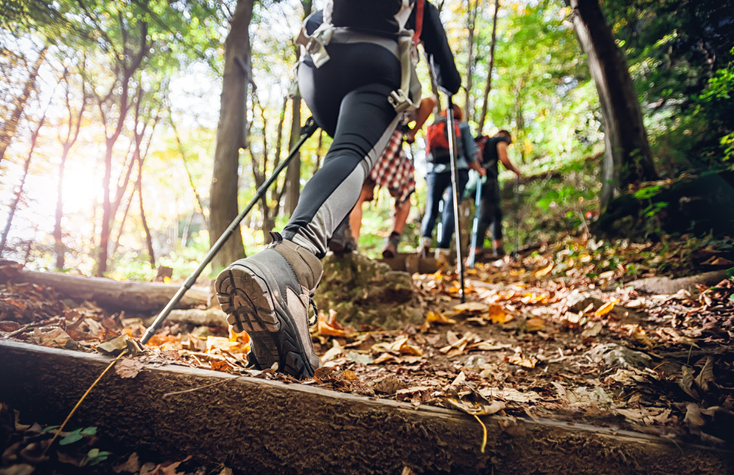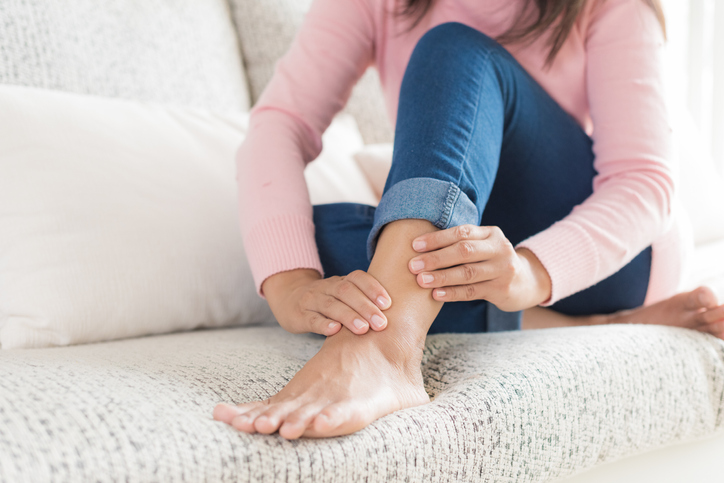Hunters and Hikers: Long, vigorous hikes take toll on feet, ankles
Mark Williams2020-10-12T23:20:15+00:00
As brightly colored leaves dazzle the fall landscape, hikers and hunters nationwide will migrate to mountains, woods and fields, but many, unfortunately, are ill prepared for the beating their feet will take, warns Dr. Gillroy.
“Hikers, hunters and others who love the outdoors often don’t realize how strenuous it can be to withstand constant, vigorous walking on uneven terrain,” said Dr. Gillroy, a member of the American College of Foot and Ankle Surgeons (ACFAS) located in Olympia, Washington. “Lax physical conditioning and inappropriate footwear bring scores of outdoor enthusiasts into our office each fall for treatment of foot and ankle problems such as chronic heel pain, ankle sprains, Achilles tendonitis, fungal infections and severe blisters.”
“Walking up and down steep hillsides and tramping through wet, slippery fields and wooded areas puts stress on the muscles and tendons in the feet and ankles, especially if you haven’t conditioned properly before hitting the trail,” said Gillroy. “Also, many don’t realize that cross-training athletic shoes aren’t the best choice for extended hiking and hunting. Had some of my patients worn sturdy, well-constructed hiking boots, they wouldn’t have suffered sprained ankles or strained Achilles tendons.”
Gillroy advises hikers and hunters to make the investment in top-quality hiking boots. She said strong, well-insulated and moisture-proof boots with steel or graphite shanks offer excellent ankle and foot support that helps lessen stress and muscle fatigue to reduce injury risk. “The supportive shank decreases strain on the arch by allowing the boot to distribute impact as the foot moves forward. So if a boot bends in the middle, don’t buy it.”
In wet and cold weather, wearing the right socks can help prevent blisters, fungal infections and frostbite. Gillroy recommends synthetic socks as the first layer to keep the feet dry and reduce blister-causing friction. For the second layer, wool socks add warmth, absorb moisture away from the skin, and help make the hiking boot more comfortable. “Wool lets moisture evaporate more readily than cotton, so fewer blisters develop,” she added.
What happens if your feet or ankles hurt during a hike or hunt? Gillroy said pain usually occurs from overuse, even from just walking. “If you’re not accustomed to walking on sloped or uneven ground, your legs and feet will get tired and cause muscles and tendons to ache,” she explained. “To avoid a serious injury, such as a severe ankle sprain or an Achilles tendon rupture, rest for a while if you start hurting.”
According to the ACFAS consumer website, FootHealthFacts.org, pain is a warning sign that something is wrong. “Serious injury risk escalates significantly if you continue hiking in pain.” She likened hiking to skiing, in that beginners should take on less difficult trails until they become better conditioned and more confident.
Evaluation by a foot and ankle surgeon is recommended if there is persistent pain following a hiking or hunting outing. “I’m most concerned about ankle instability and strained Achilles tendons. Inattention to these problems at their early stages may lead to a serious injury that will keep you off the trails for a long time,” Gillroy said.
Hikers and hunters seeking further information about ankle sprains, Achilles tendon injuries and other foot and ankle problems may contact Dr. Gillroy at (360)438-9092




